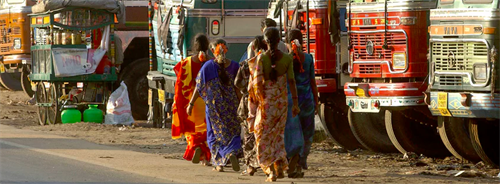'Heroin is very good at getting rid of all my problems': drugs and sexism in India
Gender bias and stigma mean female drug addicts survive under the radar, making it harder for them to access treatment.
1 Aug 2017After selling heroin on the streets all morning, former school teacher Jenny is tired and in need of her next hit. Carrying her earnings, she travels to a decrepit house on the outskirts of Imphal, capital of the north-eastern Indian state of Manipur, to find some relief.
It’s here that people drugs openly inject and unwind, and where Jenny, 46, picks up her next gram of heroin to sell on the streets. She can’t remember when she began injecting heroin – she thinks it was about 10 years ago when problems with her husband reached boiling point – nor can she remember the last time she saw her two children.
“Heroin is very good at getting rid of all my problems. If I don’t get it, it’s very hard,” says Jenny, while describing how she lives on the streets, sometimes sleeping in public toilets or the nearby forest, other times at hotels where she does sex work. “I need treatment. I will quit, just tell me where to go.”

In 2011 India was hailed for its introduction of methadone maintenance treatment (MMT) to reduce drug dependence and HIV and hepatitis C infections among people who use drugs. Methadone works by blocking the “high” caused by using opiates and helps reduce cravings and withdrawal symptoms.
But six years on, despite strong evidence of its benefits, the criminalisation of drug use, inadequate services and an emphasis on detoxification and rehabilitation remain major barriers to the ability of people who use drugs to access treatment.
ForJenny, simply being female makes it even harder. She faces the double stigma of being someone who uses drugs and a woman, which immensely hinders the ability of people like her to overcome addiction.
Click here to read the full article
If you have any comments please tweet us @idhdp or visit our facebook page
Doctors can lead the way to healthier drug policies – join IDHDP now
Share this on: